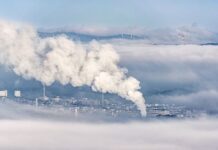This is Scott Amyx with today’s Climate Change Flash Briefing.
California had the most destructive and deadliest wildfire season on record with a total of 8,527 fires burning an area of 1.9 million acres, the largest amount of burned acreage recorded in a fire season. The wildfires have caused more than $3.5 billion in damages. 98 civilians and 6 firefighters were killed.
Increased fire susceptibility were attributed to increase in dead trees that gave more fuel to burn longer and stronger and compounding atmospheric conditions such as increased temperatures, less rain, and increased dryness that raised wildfire risk. Also since the 1990s, over 43 percent of new residences have been built in wildland-urban interface zones.
The wildfires drastically increased air pollutants during the height of the July and August fires. Air quality indexes surpassed 200 in the unhealthy region — the air so thick with smoke it ranked among the dirtiest in the world and health warnings prompted widespread school closings. Short-term exposure to wildfire can spur a lifetime of asthma, allergy, and chronic lung diseases.
Stay tuned next time to find out how quickly sea levels are rising.


















